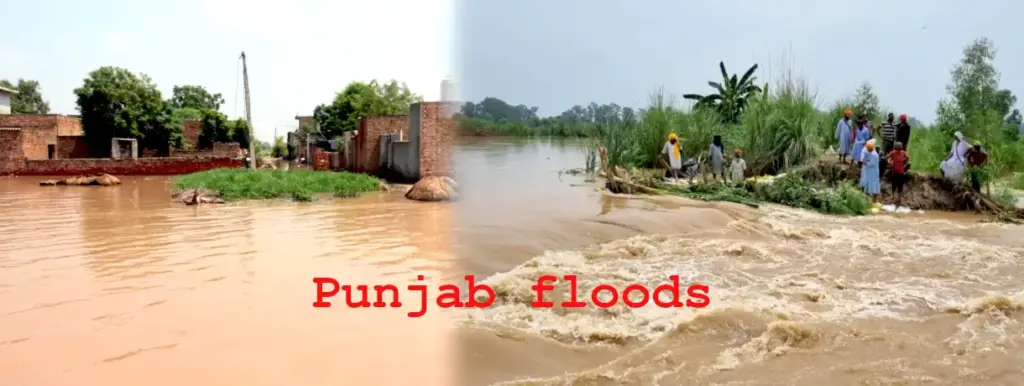
UPDATE: Severe flooding triggered by relentless monsoon rains is wreaking havoc in Punjab and Maharashtra, prompting urgent alerts and emergency measures across the regions. Heavy rainfall, coupled with the controlled release of water from major dams, has led to catastrophic conditions, especially in Punjab where over 40 villages face unprecedented flooding.
In Punjab, the situation has escalated rapidly. Authorities have opened floodgates at the Bhakra and Pong dams to manage dangerously high water levels, releasing a staggering 57,000 cusecs into the already swollen Beas and Sutlej rivers. This has caused extensive flooding in low-lying areas, particularly around Shahkot in Jalandhar and Sultanpur Lodhi in Kapurthala. Reports indicate that some areas are experiencing water accumulation of up to 5-6 feet, devastating agricultural lands and threatening livelihoods.
In response to the crisis, relief camps have been established to provide shelter, food, medical care, and livestock fodder for displaced residents. The government has placed health and civil administration on high alert, deploying hundreds of ambulances and mobile medical teams to assist those affected. Health officials urge the public to seek immediate assistance for any symptoms of fever or diarrhea.
Meanwhile, in Maharashtra, the situation is equally dire. The state, particularly Mumbai and surrounding districts, is grappling with its rainiest August in five years, with certain areas recording over 300 mm of rain within just 24 hours. The Mithi river has overflowed, causing knee-deep flooding in many neighborhoods. Over 4,000 people have been displaced in just two days, with Raigad district being the hardest hit, affecting over 1,332 residents.
The flooding has disrupted train services and forced the closure of schools and numerous businesses, while critical infrastructure, including roads and highways, has suffered severe damage. Weather experts attribute this extreme weather to a rare convergence of five weather systems enhancing moisture levels on the west coast.
Authorities have issued ongoing forecasts predicting further heavy rainfall throughout the rest of August, maintaining orange and red weather alerts. Emergency measures are in effect, with relief efforts being mobilized to support residents impacted by the flooding.
NEXT: As conditions continue to develop, authorities are closely monitoring the situation. Residents are urged to stay informed and heed evacuation orders where necessary. The coordination between the Bhakra Beas Management Board and state officials is crucial in mitigating the flooding’s cumulative impact on downstream districts.
The urgency of this situation cannot be overstated. With the potential for worsening weather conditions, immediate action and community support are vital in addressing the humanitarian crisis unfolding in these regions.





